- Home
- Louisa May Alcott
The Annotated Little Women Page 2
The Annotated Little Women Read online
Page 2
The first twelve chapters of Little Women are among Alcott’s most perfect creations, but they are not yet a novel. Each can be read almost independently, as one might read a loosely connected series of short stories. If there is a unifying question in these chapters, it is only whether the girls will behave in a way that their father will find sufficiently pleasing when he returns home—an interesting query but perhaps a trifle thin to sustain an entire book. Probably sensing that her ideas lacked an inner cohesion, Alcott was able to find an appearance of overall direction only by grafting her tales onto a preexisting structure, supplied by her pervasive allusions to Bunyan’s The Pilgrim’s Progress. It was evidently only after Thomas Niles revised his first opinion of the work that Alcott began to think more broadly about turning Little Women into an integrated, comprehensive whole. The change is evident in “Castles in the Air,” the first chapter Alcott wrote after the initial dozen. In that chapter, Laurie and the March sisters begin to think, however fancifully, about their lives beyond the immediate future. Except for the humble ambitions of Beth, who wants only to live at home and care for her parents, the goals that they imagine for themselves are exuberantly unrealizable, and that’s part of the fun. Nobody really expects Amy to become the world’s greatest artist or Jo to acquire a magic inkstand. But even the wildest dreams tell some truth about those who dream them, and, much more clearly than before, we see Meg, Jo, and Amy as vessels of ambition. “Castles in the Air” brings a pair of key questions to the fore: To what extent, if at all, will each girl succeed in realizing her ideal vision of herself? And, having fully vested the girls with heartfelt desires, how far is Alcott prepared to go in letting them pursue those aspirations?
These matters are especially interesting to readers who have perceived a tension since the novel began: from the moment the girls are called upon to give away their Christmas breakfasts to the destitute Hummels, they have continually been forced to choose between doing their duty to others and gratifying their self-centered desires. It seems inevitable that, for poor girls like the Marches, further sacrifices will be demanded and that the sisters will be asked to lay aside not just a holiday meal, but their most cherished dreams and wishes. Henceforth, the March sisters’ task will never again be quite so simple as pleasing their parents. They will need to fashion mature lives that will be acceptable to others but will also be satisfying to themselves. Those seeking an early hint as to how the contest between self and others might go may have found an uneasy omen in the fact that the girls divulge their dreams in the unlucky Chapter XIII. It is at this moment that the story of the March girls acquires the shape and direction that is necessary for a novel. In some ways, it is also here that their story begins to matter.
It is also in the second half of Part First that the distant horror of the Civil War transforms into a critical concern. Until now the war has chiefly been a plot device for keeping Mr. March offstage. However, when news arrives in Chapter XV of Mr. March’s illness at the front, the war truly hits home, and its intrusion at this point suggests that Alcott was beginning to think about the likely audience for her work. Despite her later frequent protestations that she wrote primarily for money, Alcott also wrote to serve as a source of strength and guidance for her young readers, and she took this obligation seriously. If, as Niles had intimated, Little Women might be a grand success, it would also be a fine opportunity for Alcott to offer words of wisdom and comfort on a subject that mattered greatly to her and to her audience. When Little Women Part First was published, the war had been over for less than three and a half years. Telegrams like the one sent to Mrs. March, often bearing even darker news, had virtually blanketed the country. The Alcotts themselves had received such a telegram concerning Louisa herself; in January 1863, while serving as an army nurse in Georgetown, Louisa had very nearly died from typhoid pneumonia. The war claimed hundreds of thousands of men. The number of Megs, Jos, Beths, and Amys they left behind may never be ascertained. Surely one of the best uses to which Alcott might put her fiction was to share her readers’ grief. To those with a Mr. March who would never come home, she might say something about how one carried on with grace and courage when one’s family was no longer whole. Even at the beginning of Little Women, Jo has an active sense of public duty; in Chapter I, she is already knitting socks for Union soldiers. In the second half of Part First, that sense intensifies. Jo’s sale of her hair to help in “making father comfortable, and bringing him home” is a sacrifice of a higher order, one that parallels Alcott’s loss of her own hair, which was shaved off while she struggled to survive the disease she contracted at the hospital. For those whose sacrifices in the war had made them, too, feel sadder, uglier, or less beloved, Jo’s donation of her hair was a potent gesture of solidarity.
As Alcott readied herself to write Part Second of Little Women, her consciousness of audience changed yet again, this time in the direction of mild resentment. She found that people wanted her to write in ways that did not strengthen their moral fiber, but seemed instead to cater to their taste for conventionality and female submissiveness. Alcott’s chief annoyance came in the form of fan letters—untold numbers of them—that expressed a common theme. Her young fans raved about Part First and could not wait for Part Second, in which, as many seemed to think inevitable, Jo would marry Laurie.
Alcott bristled at the very thought. Her identification with Jo was already deep and personal; her fans’ assumption that the only possible happy ending for a heroine was marriage not only offended Alcott’s firm belief in female equality but also seemed to imply that Alcott’s own happiness as an unmarried writer was less authentic and complete than if she had found a husband. At the same time that she basked in her readers’ adulation, she fulminated at their shallowness. “Girls write to ask who the little women will marry, as if that was the only end and aim of a woman’s life,” she groused. “I won’t marry Jo to Laurie to please anyone.” But Roberts Brothers insisted “on having people married off in a wholesale manner.” The demand that Jo must have a husband “much afflict[ed]” Alcott. Still, as she thought about the sales she might lose if she stuck to her principles, she found at last that she “didn’t dare to refuse.” As she often did when life grew too complicated to confront with a straight face, she sought a solution in humor. “Out of perversity” and much against her personal wishes, she concocted Professor Bhaer and thus contrived “a funny match” for Jo.2 Still, her compromise annoyed her. When a waggish friend suggested that the highly matrimonial Part Second of the novel should be christened “Wedding Marches,” Alcott seems to have been only half amused.
The argument over whether Jo should marry Laurie, or anyone at all, shows that the text of Little Women was an object of struggle and negotiation, involving Alcott’s individual will, her relations with her publisher, and her sense of obligation to her readership. Before she began to tackle Part Second, Alcott told a correspondent that she would very gladly write “this sort of story” and nothing else, but could not because the genre did not “pay as well as rubbish.” However, after the ensuing months and years proved to her that the genre might pay very well indeed, she came to have less regard for it, even tending to dismiss it as a species of rubbish all its own. By 1878, she had quite reversed her judgment. “I do not enjoy writing ‘moral tales’ for the young,” she confided, “I do it because it pays well.” Until the very end of her life, Alcott hoped to feel secure enough that she might write what she chose, not merely what an audience would buy. Though her wealth and fame now rivaled that of any other American author of her time, that feeling of security never came. She could not reconcile the omnipresent tension between authorial desire and public demand. As in the hearts of the characters she created, the wants of the author strove against the tastes and expectations of others.
Apart from the debate over whether and whom Jo should marry, the documentary record surrounding Little Women is too thin to reveal much about the other ways in which Alcott may have altered her vision
of the book to suit the predilections of her reading public. Yet it is fair to say that Little Women tells us as much about what late-1860s America wanted to be told about itself as it does about what Louisa May Alcott hoped to achieve as an artist. The book as a whole strikes a remarkable balance between reform and reassurance. With its pleas for temperance, its championing of support for the emancipated slaves, and its advocacy of charitable works of every description, Little Women plainly sought to urge the country toward a more humane and virtuous footing. At the same time, though, it invited readers to take secure comfort in the knowledge that the foundation of society, namely the family, was solid and enduring. In the novel’s final chapter, Jo utters a pronouncement that arguably stands as the culmination of all that Alcott has shown us: “I do think that families are the most beautiful things in all the world!” Yet Alcott adds in the next breath that Jo has been speaking “in an unusually uplifted frame of mind, just then.” Alcott was aware that Jo’s ebullient opinion was not always true: not for Jo and, more emphatically, not for Alcott herself. For many of us, as Alcott surely knew, the dream of making our families the most beautiful things in the world can fall painfully short of coming true. The fortunate may agree with Jo; others may be able to read her words only with a brutal sense of irony. Yet Little Women has retained its appeal precisely because of the bridges it builds between the “is” and the “ought.” By representing its miracles of love and togetherness as difficult but possible, the novel encourages us to try harder, to be more accepting of one another’s failings, all in the faint but persistent hope that we, too, can resemble the Marches.
Alcott wrote not only to inspire and to reassure. She also wanted to express herself—or, more accurately, the self she remembered being in her youth—frankly on the page. Through Jo, she wanted to present her own spirit, with neither the veneer of tact nor the gloss of propriety. Certainly, Little Women is a novel, not a memoir, and it contains a host of scenes and characters that had previously existed solely in Alcott’s imagination. At the same time, though, Alcott regarded Jo as an alternate version of herself. In letters written after Little Women, Alcott sometimes deliberately blurred the line between truth and fiction, alluding to family members by the names of their fictional counterparts. She published a series of short story collections that bore both her own name and the title of Aunt Jo’s Scrap-Bag. The identification deepens in Jo’s Boys, the last volume of the Little Women trilogy, when Jo, now a mature woman, becomes unexpectedly rich and famous for having written a book that is really Little Women:
A book for girls being wanted by a certain publisher, she hastily scribbled a little story describing a few scenes and adventures in the lives of herself and sisters,—though boys were more in her line,—and with very slight hopes of success sent it out to seek its fortune. . . . The hastily written story . . . sailed . . . straight into public favor, and came home heavily laden with an unexpected cargo of gold and glory.
Alcott thus constructs a charming illusion of circularity: the adult Jo has been writing herself into existence since the first page of Little Women, and the entire trilogy has been a fiction composed by an author who is herself a fiction. If one accepts Alcott’s clever conceit, then Jo has two voices in Little Women: the frank, unguarded, youthful Jo March, and the narrator, who represents the perspective of the grown woman she later becomes. Little Women thus expresses a kind of dual awareness.
A savvy marketer as well as a beloved author, Alcott seldom let a holiday season pass without turning out a new book for her fans’ Christmas stockings. Volumes in her Aunt Jo’s Scrap-Bag series of short-story collections found their way under many a Christmas tree. (From the collection of the editor)
A gap of both manners and experience of the world divides the narrator from Jo, who proudly retains her penchant for slang, her boyish carriage, and other rough edges through most of the novel. Jo the middle-aged storyteller, with her superior knowledge and periodic asides to the reader, supplies not only a narrative structure to the book but also a moral one; we depend on both her and Marmee to explain the ethics of unfolding situations. At the same time that the narrating Jo imposes order, the younger Jo disrupts it. Though not nearly as wise as the woman she will later become, the young Jo does know her own mind, and she speaks it fluently. She also knows things that the narrator can approach only through memory: what it is to be young, awkward, and filled with misgivings about growing up. The narrating Jo shapes the story with her experienced mind; young Jo enlivens it with the energy of her body and the frankness of her spirit. In Little Men and Jo’s Boys, the gap in age and experience between Jo and the writer who creates her inevitably narrows. If the latter two books of the trilogy are less compelling than the first, they may be so in large part because the youthful voice and its older counterpart gradually merge, and the tension between the two Jos naturally evaporates.
Bronson Alcott called The Pilgrim’s Progress one of his “bosom companions,” and he frequently read aloud from it to his daughters. Louisa consciously used the book as a model for Little Women. (Houghton Library, Harvard University)
As was briefly noted earlier, Alcott used Bunyan’s The Pilgrim’s Progress as a kind of trellis to structure the story of Little Women. Like Alcott’s novel, Bunyan’s allegory tells of moral transformation. Bunyan’s narrator recounts his dream of Christian, a man who, tormented by presentiments of the destruction that awaits the sinful, abandons his wife and children to pursue righteousness. Bunyan represents Christian’s striving toward purification as a physical journey. The trials and temptations the hero encounters are figured either as physical places (depression becomes the Slough of Despond; the enticements of lust and greed call out to him at Vanity Fair) or as dreadful monsters (Christian strives with wrath in the form of the giant Apollyon and must ignore the advice of false friends like Timorous and Mistrust). In the company of brave companions like Faithful and Hopeful, Christian at last makes his way to the Celestial City. As is well known, each of the March sisters is defined early in the novel by a signature flaw that it is her task to overcome. Meg wrestles with vanity; Jo tries to subdue her temper; Beth seeks to surmount her shyness; and Amy slowly learns to become less selfish. In each instance, Alcott uses a chapter title to link the inner struggle to episodes from Bunyan: “Meg Goes to Vanity Fair”; “Jo Meets Apollyon”; “Beth Finds the Palace Beautiful”; and “Amy’s Valley of Humiliation.” Though Bunyan’s presence is especially strong in the first dozen chapters that Alcott drafted at Niles’s behest, it remains a motif quite deep into the novel: “Pleasant Meadows,” the title of the chapter in which Mr. March comes home, is also borrowed from Bunyan, and the chapter that relates Beth’s passing, “The Valley of the Shadow,” is a nod both to Bunyan and the Twenty-third Psalm. Alcott’s reliance on Pilgrim’s Progress was neither random nor superficial. Bunyan’s work had been firmly entwined with her family’s history, and it had taught her early in life the power that a single book can exert over a human life.
The son of an illiterate farmer, Louisa’s father Bronson came into awareness in a home without books. He was eager for education, though, and he slowly amassed a library from the literary castoffs of neighboring farmers. From a helpful cousin, he repeatedly borrowed a copy of The Pilgrim’s Progress and committed favorite passages to memory. He called it his “dear, delightful book” and said that “more than any work of genius, more than all other books, the Dreamer’s Dream brought me into living acquaintance with myself.” Bronson took to heart with uncommon zeal the spiritual message of The Pilgrim’s Progress, a message that emphasized that the way to salvation is hard and narrow and that one does not follow it either by indulging in the carnal pleasures of this life or by being ruled by the good opinions of others. Bronson absorbed a profound wariness of material temptations and a firm resistance to popular opinion. He also believed that he had been put on earth to raise to their highest perfection the minds and souls of the people around him. As a father, Bronson dispensed reading
s from The Pilgrim’s Progress to his children along with their gingerbread. Throughout his career as a teacher, he continually impressed upon his young charges the Bunyanesque values of holy community and self-denial. When that career abruptly ended in 1839, he redoubled the lessons of charity and personal austerity that he taught his own children. Bronson’s asceticism achieved a high-water mark in 1843, when the Alcott family became charter members of Fruitlands, a vegan agrarian commune where, according to Bronson and the community’s cofounder Charles Lane, the laws of life might be summarized in a single word: “Abstain.” At Fruitlands, the influence of The Pilgrim’s Progress was powerfully in evidence. Eleven-year-old Louisa wrote in her journal that her father read aloud from the book. She pronounced Bunyan’s writing “dear,” and she copied lines from it into her diary. Toward the end of the Fruitlands experiment, Bronson Alcott proposed that the failing community might save itself by dividing along gender lines—he going one way and his wife and children going another. It is highly probable that his suggestion was partly motivated by Christian’s renunciation of his family in The Pilgrim’s Progress.
In a bold but ill-conceived experiment in communal living, the Alcotts spent the better part of 1843 seeking transcendence at the Fruitlands commune near Harvard, Massachusetts. Instead they found privation and a severe threat to their unity. (Louisa May Alcott Memorial Association)
Fruitlands did not endure. The influence of The Pilgrim’s Progress over the Alcott family did. Bronson Alcott continued to perceive his life through its textual lens. For Louisa herself, no single literary influence was as clearly dominant. Shakespeare, Scott, Charlotte Brontë, and Dickens all made large claims upon her mind, and the fact that Little Women alludes to more than sixty authors attests to the breadth of her literary diet. Yet Little Women might not even exist if it were not for Bunyan, and we need to understand why, apart from his strong presence in Alcott’s own upbringing, his sway remained so powerful.

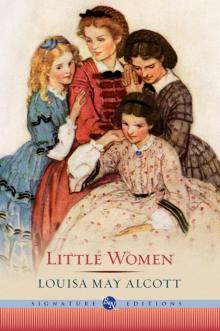 Little Women
Little Women Good Wives
Good Wives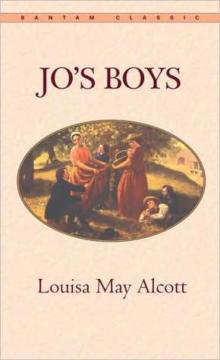 Jo's Boys
Jo's Boys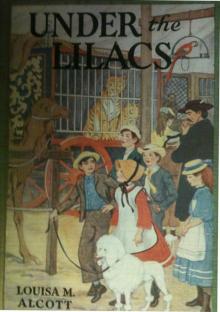 Under the Lilacs
Under the Lilacs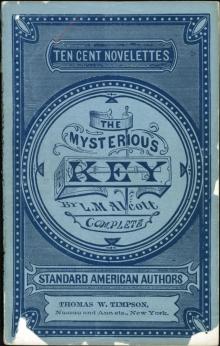 The Mysterious Key and What It Opened
The Mysterious Key and What It Opened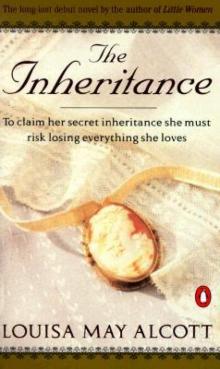 The Inheritance
The Inheritance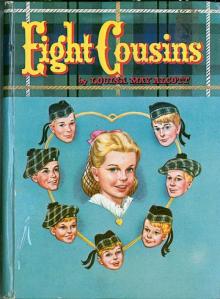 Eight Cousins
Eight Cousins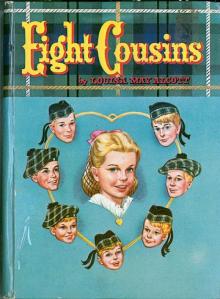 Eight Cousins; Or, The Aunt-Hill
Eight Cousins; Or, The Aunt-Hill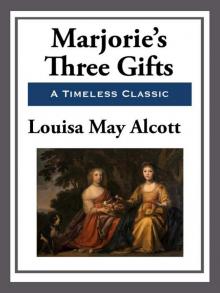 Marjorie's Three Gifts
Marjorie's Three Gifts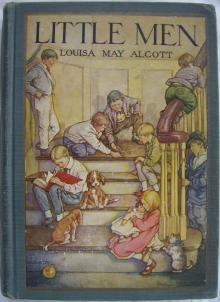 Little Men
Little Men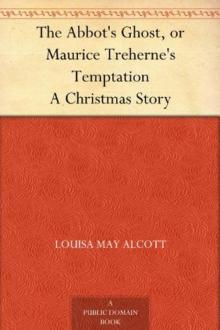 The Abbot's Ghost, or Maurice Treherne's Temptation: A Christmas Story
The Abbot's Ghost, or Maurice Treherne's Temptation: A Christmas Story Rose in Bloom
Rose in Bloom Shawl-Straps
Shawl-Straps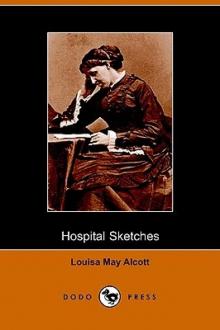 Hospital Sketches
Hospital Sketches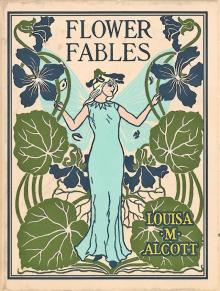 Flower Fables
Flower Fables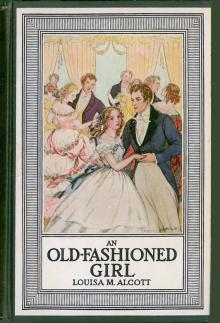 An Old-Fashioned Girl
An Old-Fashioned Girl The Candy Country
The Candy Country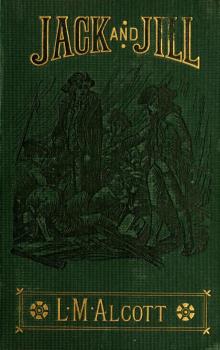 Jack and Jill
Jack and Jill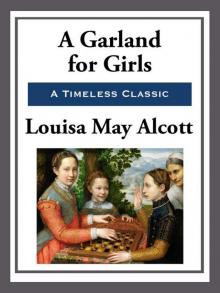 A Garland for Girls
A Garland for Girls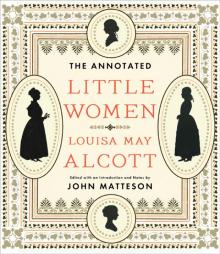 The Annotated Little Women
The Annotated Little Women A Classic Christmas
A Classic Christmas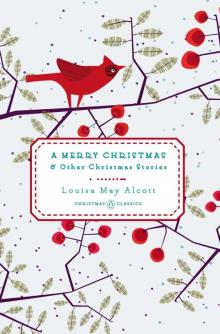 A Merry Christmas
A Merry Christmas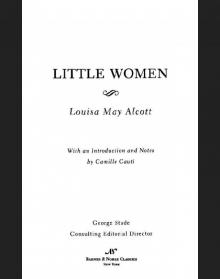 Little Women (Barnes & Noble Classics Series)
Little Women (Barnes & Noble Classics Series)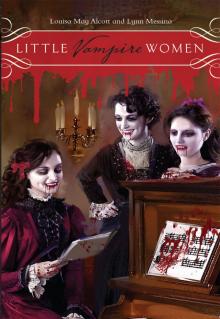 Little Vampire Women
Little Vampire Women